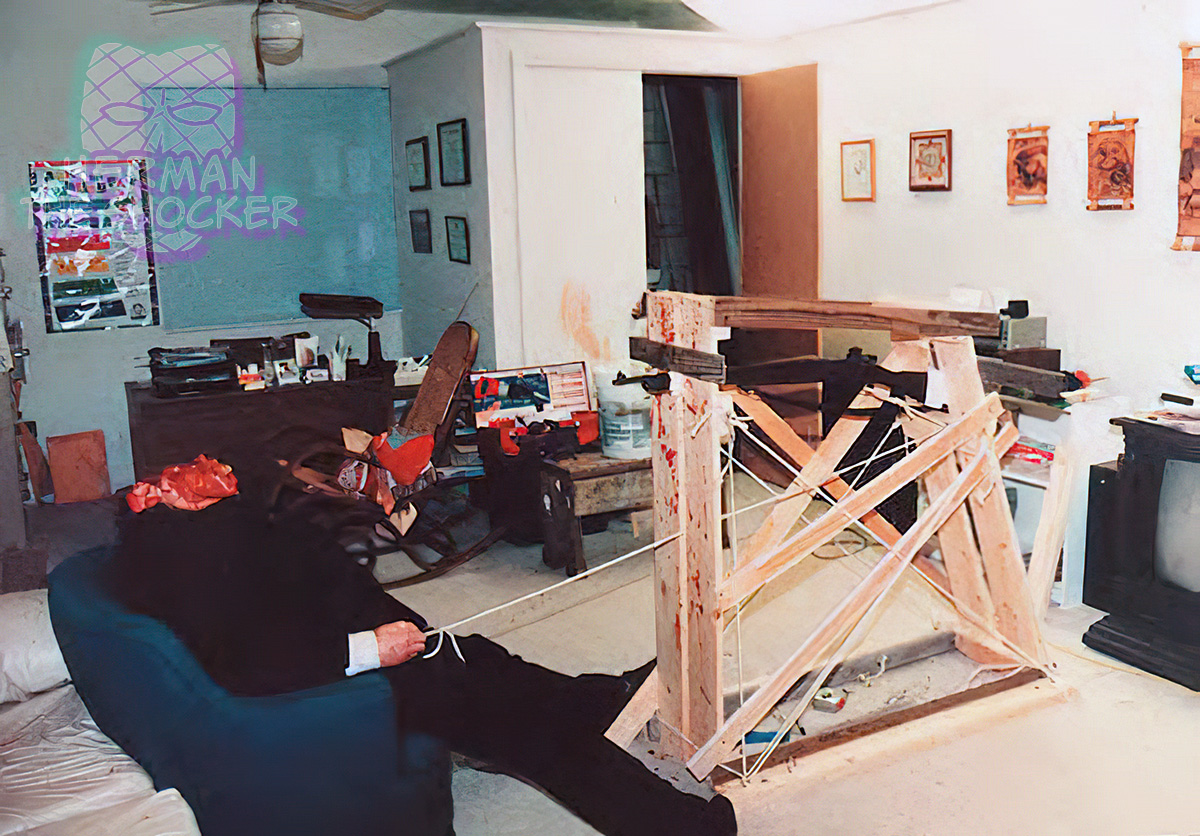Stuart, Florida, USA. Occasionally, self-inflicted gunshots involve elaborate apparatus. This individual took the time and patience to construct a wooden structure complete with a rope and pulley system in order to fire the rifle by pulling the rope with his hand.
Contact wounds in areas where there is bone immediately beneath the skin frequently produce varying dimensions of lacerations because of the expanding gases between the bone and skin. Often stellate in appearance, they are frequently seen in contact wounds of the head. These types of gunshot wounds are capable of producing significant quantities of back spatter of blood and occasionally tissue. Explosion of the head and evacuation of the brain are not uncommon.
In gunshot injuries in soft parts of the body, especially in the brain, the bullet can produce a considerable explosive effect, which is greatest with unjacketed or soft-nosed bullets from high-velocity firearms. Such a bullet may split into several parts, each of which forms its own track, and thus several exit wounds may be present. Head injuries from shotguns and high-powered rifles are typically quite devastating, often with extensive soft tissue destruction, skull fractures, and pulpifaction of the brain. Occasionally, the brain is largely expelled from the cranial vault and may be found near the body.
Centerfire rifles, whether military or hunting, frequently cause a strong ‘explosive’ effect with comminution of bones and laceration of brain tissue up to a so-called Kröhnlein shot (exenteratio cranii). Shotgun injuries differ substantially depending on the range of fire. Close-range shots have a tremendous effect similar to centerfire rifles by literally riddling brain tissue and blasting the skull. The high internal cranial pressure often leads to long skin tears, also detached from the bullet opening, as well as extensive bone fracture systems and brain tissue destruction.
Latest posts












